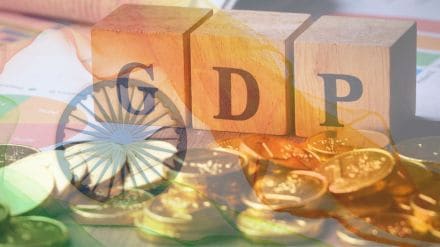While the Indian economy has remained resilient despite global uncertainties on the back of US tariffs, BofA Securities retained its full year GDP number at 6.5 per cent with downside risks for both FY26 and FY27 growth projections. “We believe the RBI would prioritize financial stability, and while it manages downside growth risks, we do not see the RBI being reactive, given the ongoing uncertainty of discussions. For now, we maintain our full year GDP number at 6.5 per cent,” said Rahul Bajoria, Head of India and ASEAN Economic Research, BofA Securities.
Earlier on August 6 while announcing the decision of the Monetary Policy Committee (MPC), the Reserve Bank of India (RBI) Governor Sanjay Malhotra had said that the central bank has retained its real GDP growth forecast for FY26 at 6.5 per cent. stating that the Indian economy remains resilient despite global uncertainties.
The move reflected the central bank’s confidence in the domestic economy’s resilience, while also acknowledging rising external risks such as tariff-related uncertainties and global trade tensions.
FY26 growth projection maintained amid uncertainties
US President Donald Trump, on August 6, signed an executive order imposing an additional 25 per cent tariff on imports from India, in response to India “directly or indirectly” importing oil from Russia. This is over and above the 25 per cent tariff on Indian imports that was imposed on July 31. This takes the cumulative duty rate to 50 per cent.
BofA said that with the additional 25 per cent tariffs and 25 per cent penalties on India, policymakers face heightened uncertainty on the macro outlook, which culminated into a cautious hold by the RBI in the August meeting.
The RBI had, in its last meeting, announced a cautious hold on interest rates keeping it unchanged at 5.50 per cent, having already frontloaded easing through both a rate cut and a 100 bps CRR reduction earlier this year. The policy stance also remained ‘Neutral’.
Even on the fiscal side, Rahul Bajoria said, the government may consider measures to relieve the impact on exporters, especially in labor intensive sectors, but only once the new economic outlook becomes a bit clearer.
In such a scenario, the brokerage firm maintained its full year GDP number at 6.5 per cent.
GDP growth forecast for Q1FY26
Further, BofA Securities projected the Q1FY26 GDP growth at 6.8 per cent, slowing from 7.4 per cent in Q4FY25 but higher than 6.5 per cent in June 2024. The Q1 GDP print is expected to be released on 29 August.
However, the gap between the GDP and GVA is expected to stay large, as GVA growth is expected to be around 6.4 per cent vs 6.8 per cent in the last quarter, given lower subsidy payouts and higher taxes.
From the expenditure perspective, growth in household consumption is likely to be supported particularly aided by a second year of good monsoon augmenting rural demand, while investment growth also rebounds given higher public spending, and improvement in capital goods IP. “We also saw front loaded rate cuts and tax cut announced in the Budget supporting growth, which should mitigate the negative impact of uncertainties around tariffs and the India-US trade deal,” Rahul Bajoria added.
GVA expected to be at 6.4% YoY
Sectorally, agriculture growth is projected at 5.5 per cent on-year, partially aided by a weak base of 1.5 per cent in June 2024. This will be driven by a good monsoon and robust sowing activity.
Mining, however, remained weak due to early monsoon, which in turn weighed on power demand, resulting in a sharp drop in coal demand.
Manufacturing also slowed in Q1FY26 vs last quarter due to weakness in the auto sector- with both two wheelers and passenger car sales seeing a contraction offset by growth in tractor sales.
Construction is expected to remain robust at around 8 per cent growth, supported by higher steel and cement demand.
According to the report, services growth will see mixed trends — transport services have picked up, public services are expected to touch an 11-quarter high, but financial services remain under pressure due to slowing credit growth. However, BofA Securities maintained, with RBI frontloading the rate cuts, credit disbursement is likely to improve in coming quarters.
